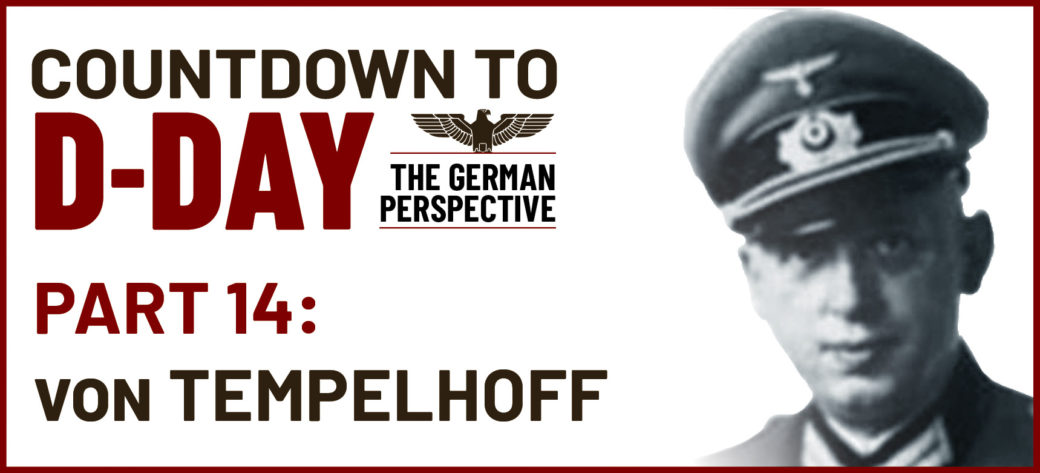On the eve of D-Day, Peter Margaritis chronicles the life of Hans-Georg von Tempelhoff, a respected staff officer, family man, and a close acquaintance of Rommel himself.
Hans-Georg von Tempelhoff, born March 18, 1907, grew up in Brandenburg an der Havel. In 1926, he joined the 3rd Prussian Artillery Regiment. The start of World War II found him as a quartermaster in the VII Army Corps for the Polish campaign. he was later promoted to the Operations officer of the 9th Infantry Division for the French campaign. In the summer of 1942, he fought with the 14th in Yugoslavia, and then the 21st Panzer Division in North Africa. He taught for a year at the Berlin Military Academy.
Rommel had first met him back in 1938 when he was still a member of the Hitlerjugend. He joined the field marshal’s staff in Italy and thereafter had accompanied the field marshal on many inspections. On several occasions, they candidly discussed the progress of the war, and after a few months, they formed a good relationship. So when Rommel was ordered to take his headquarters’ senior officers to France to inspect the Atlantic Wall, von Tempelhoff went along, now as Rommel’s chief operations officer (Ia).
Interestingly, his wife Maryanne is English-born, a point that von Tempelhoff often was often ribbed about, especially since he spoke excellent English. Married in 1937, they had a girl in 1939 (Elizabeth), a boy in 1943 (Howell), and two more children after the war.
Von Tempelhoff accompanied Rommel on his fateful trip home two days before D-Day, and Rommel’s aide, Capt. Lang, was allowed to use the second car to go home. Rommel’s driver took von Tempelhoff to Ulm, where he caught a train for his home in Munich. They had planned for Rommel to pick up von Tempelhoff for their trip to Berchtesgaden to see the Führer. However, it was General Speidel who called von Tempelhoff the morning of June 6th to tell him of the invasion. Rommel, he was told, was going to leave immediately for France. Von Tempelhoff and his driver, Marasch, would have to return using another car. He finally arrived back at La Roche-Guyon after midnight.
When Rommel was wounded in July 1944, von Tempelhoff continued as army group operations officer for Field Marshal von Kluge, and then Field Marshal Model. In the last weeks of the war, Tempelhoff commanded the 28th Jäger Division on the Eastern Front.
After being released by the Allies, he worked for a time in 1949 as a cleric, before becoming a technical consultant in Damascus until 1952. That August, he took on a position at the West German Ministry of Distribution as a trainer. He purchased a villa at the foot of the Zugspitze mountain in Bavaria where he lived with his wife.
During that time, he also served as an officer in the Bundeswehr, and starting in 1956, he was appointed to the NATO Military Committee. A few years later, as a Generalmajor, he was given command of the 1st Panzergrenadier Brigade. In the fall of 1962, he took over command of the 3rd Panzer Division for four years.
He died on May 31, 1985.
Hans-George von Tempelhoff and his role in the defence of the Atlantic Wall is explored in the new book, Countdown to D-Day, available now.


 Follow
Follow